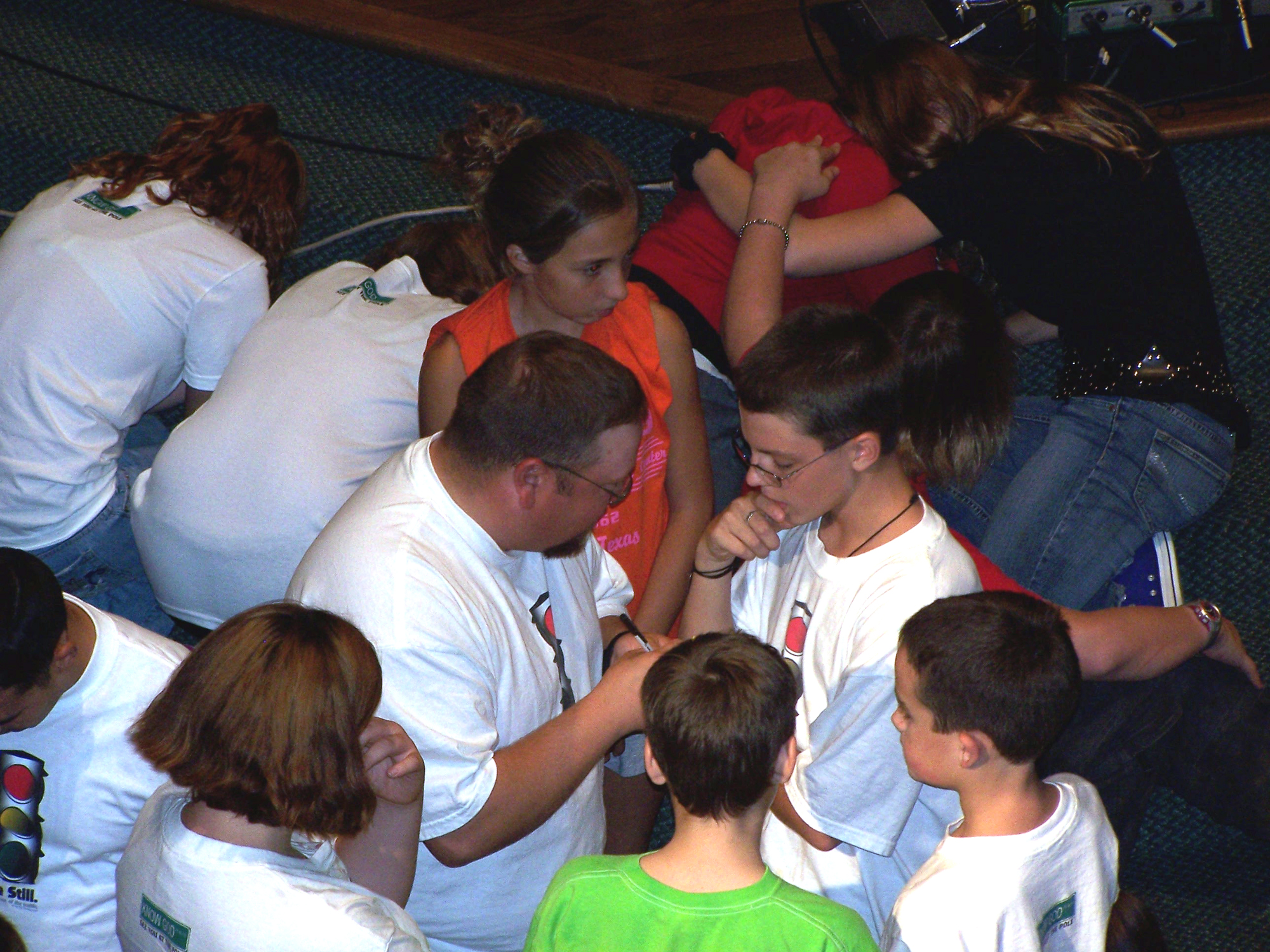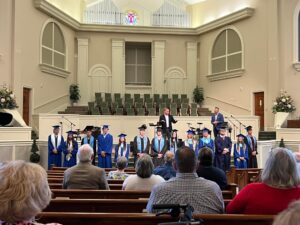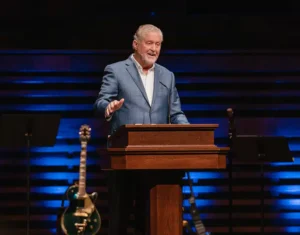
PAMPA, Texas (BP)–What happens when two fires merge? A church on the grassy plains of the Texas panhandle is finding out.
When First Baptist Church in Pampa burned to the ground in 1973, the congregation rallied to rebuild -– and found a new energy for reaching out to people in their community and, through the Cooperative Program, around the world.
Johnny Funderburg, First Baptist’s pastor since August 2004, was a pastor in Whitesboro, Texas, when his home burned to the ground in 1997.
“When you lose everything, it just humbles you,” Funderburg said. “I think God used that opportunity of my being tender, needy, to draw me to Him. A passion for God came out of that … and what naturally flowed from that was to begin to pray and just trust Him.”
First Baptist eagerly embraced Funderburg’s commitment to prayer when they called him as pastor, coupling it with their commitment to reach out with God’s love, including the Cooperative Program channel of combining the efforts and resources of local Southern Baptist churches to make a difference in the lives of people across the nation and around the world.
“The Cooperative Program is the best tool we know of to reach the most people at the same time,” Funderburg said. “It is by far in my opinion the very best method of doing missions. It enables our missionaries to concentrate their efforts on their work without having to worry about funding.
“It benefits the missionaries as well as their ministries,” the pastor continued. “I’m glad we can provide for them the way we do, enabling them to give their attention to the people they’re ministering to.”
The Cooperative Program provides other benefits for First Pampa members beyond the blessing that comes from freely giving as they have been given, the pastor said.
“As they give, they feel they have a part in the Great Commission,” Funderburg said. “It’s trite to say, ‘Not everyone can go,’ but not everyone can go. Our church benefits from being a minister to the missionaries. The Christian call is one of service; the Christian call is one of duty. It’s a call of sacrifice.
“We give through the Cooperative Program in part so that the money we receive isn’t just spent on us. We have this opportunity to minister beyond ourselves.”
First Baptist is a storied 100 years old this year, and the town just 18 years older.
In 1888 the Santa Fe Railroad set up a telegraph “office” –- a sidelined boxcar -– at a water depot about 90 miles northeast of Amarillo; Pampa was platted in 1902. Four years later, 11 Baptists got together and talked about starting a church, two months after Methodists started the first church in Pampa. Within a year, 22 Baptists founded the church, according to a document at the White Deer Land [local history] Museum in Pampa.
“Services were held Sunday, April 7, 1907, at 11 a.m., and thereafter the church held regular preaching services, received and dismissed members and received tithes and offerings,” according to the document.
That September, church members called J.W. Whatley as their first pastor. He was to preach one Sunday a month. Two years later, they promoted him to preach twice a month. The first every-Sunday pastor was called in 1916. By then, First Baptist had constructed a stone church building.
A Woman’s Missionary Union was formed in the summer of 1913, after First Baptist members -– most of whom were wheat farmers or cattle ranchers -– had voted to build.
“Although they had plenty to eat, they did not have much cash, so the women served dinners on election days and other special days,” according to the document at the White Deer Land [local history] Museum. “They had food sales and bazaars, sold ice cream on Saturdays and did other things to make money to help pay for the new building.”
In 1925, Pampa’s population was about 1,400 and the church’s membership, about 330. Then came the discovery of oil. Within five years, the town’s population had soared to more than 10,000. The church responded by constructing a two-story education building (upstairs) and funeral home (downstairs). Two years later the church built a new worship center. That’s the building destroyed by fire on Dec. 23, 1973.
“The church really responded and moved forward after that,” Funderburg said.
Today, about 700 people worship on Sundays at First Baptist. Members are involved in a variety of ministries, starting by meeting local needs through a sizable, ongoing benevolence ministry that often includes the purchase of needed furniture as well as the more usual food and clothing. A local crisis pregnancy center, women’s homeless shelter, special needs residents and a Baptist camp also draw church members’ involvement.
A dozen members recently received disaster relief training for a feeding unit; they’re also involved in establishing an associational feeding unit.
“Southern Baptists of Texas have talked with us about this,” Funderburg said. “They want [Top o’ Texas Baptist Association] to be one of the quick responder units.”
First Baptist has helped with a variety of missions needs beyond Pampa over the years. Three recent destinations: New Orleans for Hurricane Katrina relief; Prairieville, La., for new church construction; and Fort Collins, Colo., for VBS, singing and minor construction.
“We’re also very strong in honoring our veterans,” the pastor said. The church’s www.fbcpampa.org website, for example, has photographs of members who are veterans.
“I just honor these guys and ladies and I think the same way about missionaries; generally it’s about the spirit of sacrifice both groups have,” Funderburg said. “Jesus said, ‘No greater love is there than to give your life for another.’ I see that through our troops; I see that in our missionaries who are willing to leave family, comfort, culture.”
Prayer, however, has become central to all that First Pampa does. People come to Wednesday night services to be prayed for; members also go throughout the week to the homes of people in the community to pray for their needs.
“We have learned through praying for folks in crisis times that they sense the love of God, the presence of God, the power of God in a very real way, and also they know that as a church we love them as we reach out that way,” the pastor said. “We believe that this shares the love of God in a very real, tangible way. We think that this is the call of the church, to bear witness of His love and care.
“We give 13.5 percent to missions through the Cooperative Program,” Funderburg continued. “That falls in line with a missions mentality and is in line with trying to meet needs of people –- doing the best we can to demonstrate that love and concern of the Lord.”
The pastor paused in thought.
“We haven’t stressed praying for missionaries as much as probably we should have,” he said. “That’s something we need to do more of. We need to be as aware of missionaries and their needs as we are our people here and their needs.”
–30–
















